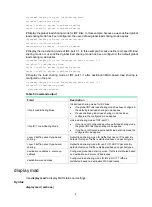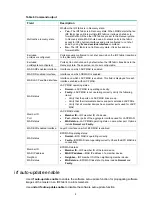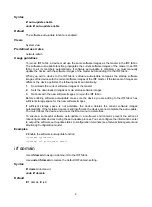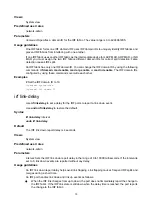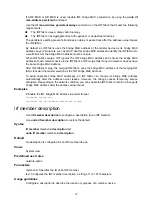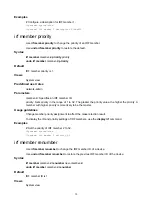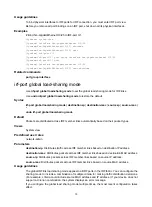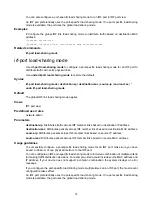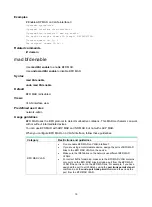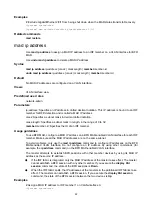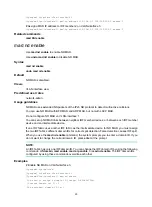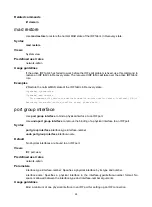
18
[Sysname-irf-port1/2] quit
[Sysname] interface ten-gigabitethernet 1/0/27
[Sysname-Ten-GigabitEthernet1/0/27] undo shutdown
[Sysname-Ten-GigabitEthernet1/0/27] quit
# Save the configuration so the IRF port settings can take effect after the device reboots.
[Sysname] save
The current configuration will be written to the device. Are you sure? [Y/N]:y
Please input the file name(*.cfg)[flash:/startup.cfg]
(To leave the existing filename unchanged, press the enter key):
flash:/startup.cfg exists, overwrite? [Y/N]:y
Validating file. Please wait............................
Saved the current configuration to mainboard device successfully.
# Activate the IRF port.
[Sysname] irf-port-configuration active
mad arp enable
Use
mad arp enable
to enable ARP MAD.
Use
undo mad arp enable
to disable ARP MAD.
Syntax
mad arp enable
undo mad arp enable
Default
ARP MAD is disabled.
Views
VLAN interface view
Predefined user roles
network-admin
Usage guidelines
ARP MAD detects multi-active collisions by using extended ARP packets.
Do not configure ARP MAD on VLAN-interface 1.
You can use ARP MAD with BFD MAD and ND MAD, but not with LACP MAD.
You can set up ARP MAD links between neighbor IRF members, or between each IRF member
device and an intermediate device.
If one IRF fabric uses another IRF fabric as the intermediate device for ARP MAD, you must assign
the two IRF fabrics different domain IDs for correct split detection. False detection causes IRF split.
When you use the
mad arp enable
command, the system prompts you to enter a domain ID. If you
do not want to change the current domain ID, press
enter
at the prompt.
NOTE:
An IRF fabric has only one IRF domain ID. You can change the IRF domain ID by using the following
commands:
irf domain
,
mad enable
,
mad arp enable
, or
mad nd enable
. The IRF domain IDs
configured by using these commands overwrite each other.



